There’s an art to designing a pillow selection for a sofa, bed, or chair.
These can be some of the most interesting fabrics and colors in the room, and the selections and arrangement are typically a designer’s sweet spot. :-)
While there may seem to be many a designer’s project out there with a seemingly random placement of pillows, you can bet that it is anything but!
This blog contains affiliate links. Any purchases made through these links render me a small percentage at no additional cost to you and are so very appreciated.
Steps to select and design the perfect decorative pillows:
Select Fabrics - patterns and colors, tie in with other elements in the room.
Design the combination - pair the colors and patterns together and think about where they will sit on the upholstery in the room.
Select Sizes - sizes and shapes, square or round, lumbar, etc. Every inch matters on a piece of upholstery or bed.
Add details if desired - trim, welting, buttons, and special details can make pillows interesting
Now if you’re going for a boho vibe and want that truly random look, a more carefree approach can be taken as to how to pick your pillows. However...
Even that look can be intentional.
Here’s a grouping of pillows I did for my Showhouse daybed for a teenaged girl, some years ago. These pillows varied in sizes and patterns, yet I guarantee you: I was super focused on how those pillows would be arranged, as well as how the patterns and colors would work together.
MUST-SEE: Showhouse Bedroom For a Teen Girl - Designer - Carla Aston, Photographer - Miro Dvorscak
1. Start With Fabric Choices
These fabrics are often the most expensive in the room, because a few yards of a delicious, high-end fabric can go a long way in making an impact, when used as a pillow.
In a showhouse room I did some years ago, I wanted a super luxurious feel. I secured a navy velvet chair from a local designer showroom to use and wanted an equally luxurious fabric for my pillows.
This shirred silk fabric was over $250 a yard and I used navy velvet as welting. Luckily, I didn’t need that much to make this pillow and the others that were in the same fabric, on the window seat in the room.
Much like how I say that you should pick the paint color last on a job (because there are a jillion colors to pick from for paint and not as many choices for other items in a room), the opposite holds true for the fabrics we choose for a room.
We often start with patterns or bold colors for pillows and then fill in the rest of the room with solids for upholstery, because there are so many more solids available than patterns or pattern combinations that work well together.
Most people like their big investment pieces to be a color or pattern that they know they will want to live with for a long time. That usually means a solid or textural fabric for large upholstered pieces — so we save the trendy, fun stuff for the pillows.
In that case, we pick the pillow fabrics early on, then fill out the rest of the choices with the (much more prolific) solid fabrics to work with the patterns for the pillows.
The pillows definitely needed to make a statement on this rich, blue sofa. The purple solid and patterned fabrics gave just the punch it needed. Designer: Carla Aston
The combination of a large scale plaid and then a small scale houndstooth pattern works well on this neutral, solid color sofa.
The large plaid and the small houndstooth patterns work well together on the pillows for this neutral sofa. carlaaston.com
Here was a grouping of samples for an kid-friendly upstairs loft space. The rugs and pillow fabrics were selected first and then the exact colors of the solid upholstery fabrics, to provide the background for the patterns. This was done all during the initial design phase not as an after thought. Of course, this is an ideal situation.
See how the pillows in this upstairs loft bounce the color around the room and help to mix things up? All done with a coordinated style.
The pillows in this kid-friendly loft space serve to bounce the color and pattern around the room and mix things up nicely. carlaaston.com
The pillow patterns add interest in this kid-friendly loft space. carlaaston.com
Now let’s say the scheme is developed; we have our interesting fabrics for our pillows pulled; and then we have our more basic, solid fabrics ready to go for upholstery.
How do we plan for the arrangement to go on the piece of furniture?
Intentionally! That’s how!
2. Design the Layout or Combination of Pillow Fabric
Do you see how these pillows featured in rooms below have been coordinated in terms of color, pattern, and style? I purposefully plotted each arrangement and combination, designed any details necessary, and had them made with a custom workroom.
Planning the color combinations and arrangement of the pillows for these sofas carlaaston.com
These two pillow fabrics were selected for a sectional sofa that was existing in a client’s home. I selected one large pattern and one smaller, in color tones that worked with the upholstery and then the blue accent color we had elsewhere in the room.
I did three of each of these patterns, one of each pattern in the three corners of the sectional.
These decorative pillow fabrics were selected specifically for this existing client’s sectional sofa. They coordinate beautifully! carlaaston.com
The combination of these fabrics was carefully considered in the Schematic Design phase of this room. We wanted bold, colorful and the introduction of red with these pillows. A couple of large scale patterns and then a smaller, more textural scaled one combined nicely with the other materials in the room.
Bold patterns and color are introduced into the overall design of this space with the custom pillows. carlaaston.com
3. Pillow size is important
Most of the square pillows I do are down filled, all with hidden zipper enclosures, all plump and large, at least 22” or more.
Don’t go smaller unless it’s a lumbar pillow or some kind of accent, like in the pile of pillows on the daybed above. 18” is typical retail, and it looks like you skimped if it’s a toss pillow on a sofa.
Of course, we go up on the insert size, as the insert should be 2” larger than the hidden-zippered-cover, so that it stays plump and full looking.
I planned the color layout of the pillows on these two sofas, below. Can you see here how 18” pillows would look small, diminutive and unimportant on these sofas?
Two sofas with assorted custom pillows - Designer: Carla Aston | Photo by Tori Aston
If you have a small sofa, use less pillows.
One large pillow is better than two small ones, any day.
I had a situation where the homeowner had a very deep sofa and needed pillows to make it more comfortable and usable. They had about 7 smaller pillows on the sofa and it appeared rather tired and messy — definitely not intentional or coordinated.
This sofa looks tired and messy with lots of small pillows on a deep sofa. Go bigger with your pillows, 22” square at least, with a 24” insert, for a more full and plump look. | carlaaston.com
When you need lots of pillows, do two of a large pattern, two of a smaller pattern or solid, then a long lumbar in the middle, like this:
When you need lots of pillows for a sofa do this - 4 large 22” square pillows with a long lumbar. Designer: Carla Aston
Here’s a super deep sofa, almost like a daybed actually, that a client reused in their project. We did new lumbar pillows to create a more shallow seat in this sofa.
Beefy lumbar pillows helped fill this ultra deep sofa, so that it was more comfortable to sit in. carlaaston.com
You should measure the width of the inside of the seat of a chair, to get a good pillow width for a chair pillow. You don’t want it to look too skimpy or be too stuffed in the seat. If you’re buying the chair new, most have the inside dimensions of the chair seat listed in the specifications.
This lumbar pillow fabric marries the beige and gray scheme and finishes off these chairs nicely. They were made to fit the width of the chairs. carlaaston.com
4. Add Details if Desired on Your Decorative Pillows
I don’t get too crazy with added details typically on pillows, as I want my fabric patterns and colors to do more of the heavy lifting. I think it just makes more impact to have a bold pattern or color, rather than some extra trim on a pillow and I’m typically out to get the biggest bang for the buck for my clients.
However, I do love a nice welting to just outline a shape or add some texture. And goodness knows, there’s so much you can add to a pillow to give it more detail!
I did this combination of pillows for a recent project and added the cord welting on one of the fabrics to define the edge and relate to the neutral sofas they were sitting on. The other striped patterns were strong, visually, on their own.
A corded welting was used on the smaller patterned pillows to add some definition and relate it to the sofa fabric. | carlaaston.com
These twin beds were designed with some boxed Euro sized pillows to help with sitting up in bed in a guest room. They were welted to match the headboards.
Boxed euro sized pillows were welted to match the upholstered beds in this twin bedroom. | carlaaston.com
I used a bold tape trim on my own pillows in my breakfast room. I wanted something graphic but still wanted a bold blue color there. This tape fit the bill perfectly.
Graphic tape trims out the face of these blue chair pillows to make a statement in my breakfast room. carlaaston.com
I do love a pillow with a little mini-flange, especially for a bedroom.
Custom pillows for a client, with mini-flange edge detail. carlaaston.com
Check out more decorative pillow combinations below!
These pillows below are sumptuous, inviting, and they add color and style to the rooms. They were intentionally designed for the spaces they inhabit, and I think they look it. ;-)
These colorful pillows relate to the caramel color ottoman and the sofa in soft, subtle way. The patterns vary in size and the mix works well in this living room. carlaaston.com
Coral and gray custom pillows - Designer: Carla Aston
Neutral Sectional Sofa with Antelope Rug, Designer: Carla Aston | Photo by Miro Dvorscak
Silk pillows in tone on tone pattern and shirred silk with velvet welting - Designer: Carla Aston | Photographer: Miro Dvorscak
Velvet and patterned pillows on neutral sofa - Designer, Carla Aston
Gray and citrine custom pillows with welting - Designer: Carla Aston
Gray sectional with colorful pillows and accents - Carla Aston: Designer
Bed and bench with custom pillows | Designer - Carla Aston, Photo by Tori Aston
I loved this red, white and blue look we did on a client’s royal blue chenille sectional sofa. carlaaston.com
Yellow pillow with small pattern gray pillow on white sofa in living room | Designer: Carla Aston
The vibrant hunter green was pulled out of the artwork for use in the pillows and vases in this family room. Designer: Carla Aston
Today I’ve selected some pillows from a few online sources, just for you — pillows in several color groupings that have nice patterns and textures.
(See all that time I saved you? :-)
The squares are all at least 22” and down-filled or might be the cover only. Take a look and shop below!
Blue and Navy
Gray Neutrals
Black and White
Warm Neutrals
Long Lumbar
Need another dose of pillows and the BEST down pillow insert out there?
Check out these posts:
Pin this post to Pinterest to save for later!
How To Design the PERFECT Pillows For YOUR Home’s Decor! - A 4 step process that will guide you all the way through. | carlaaston.com

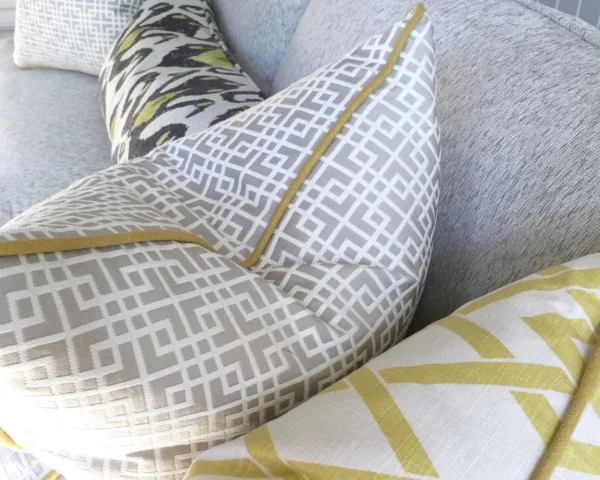
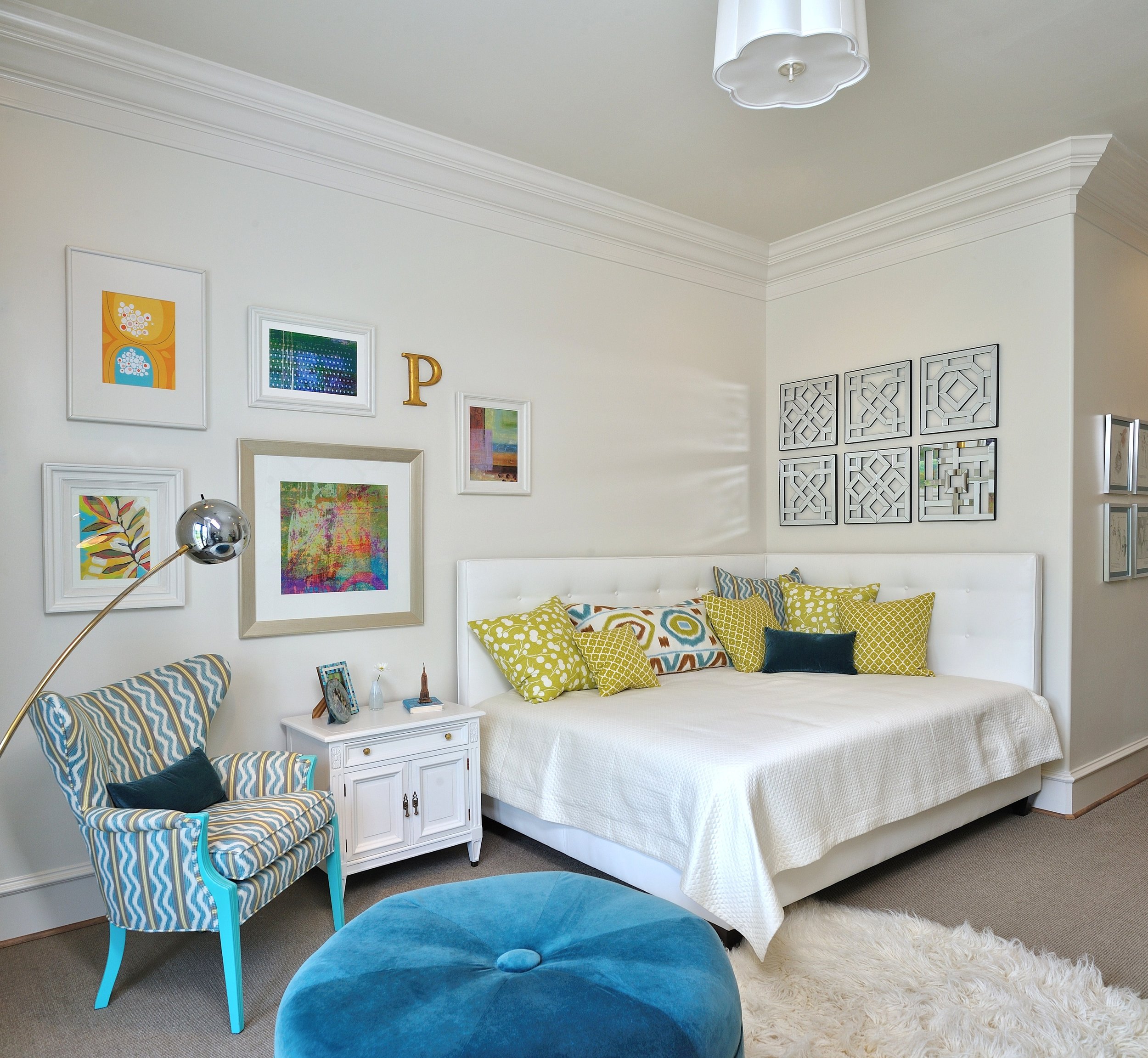
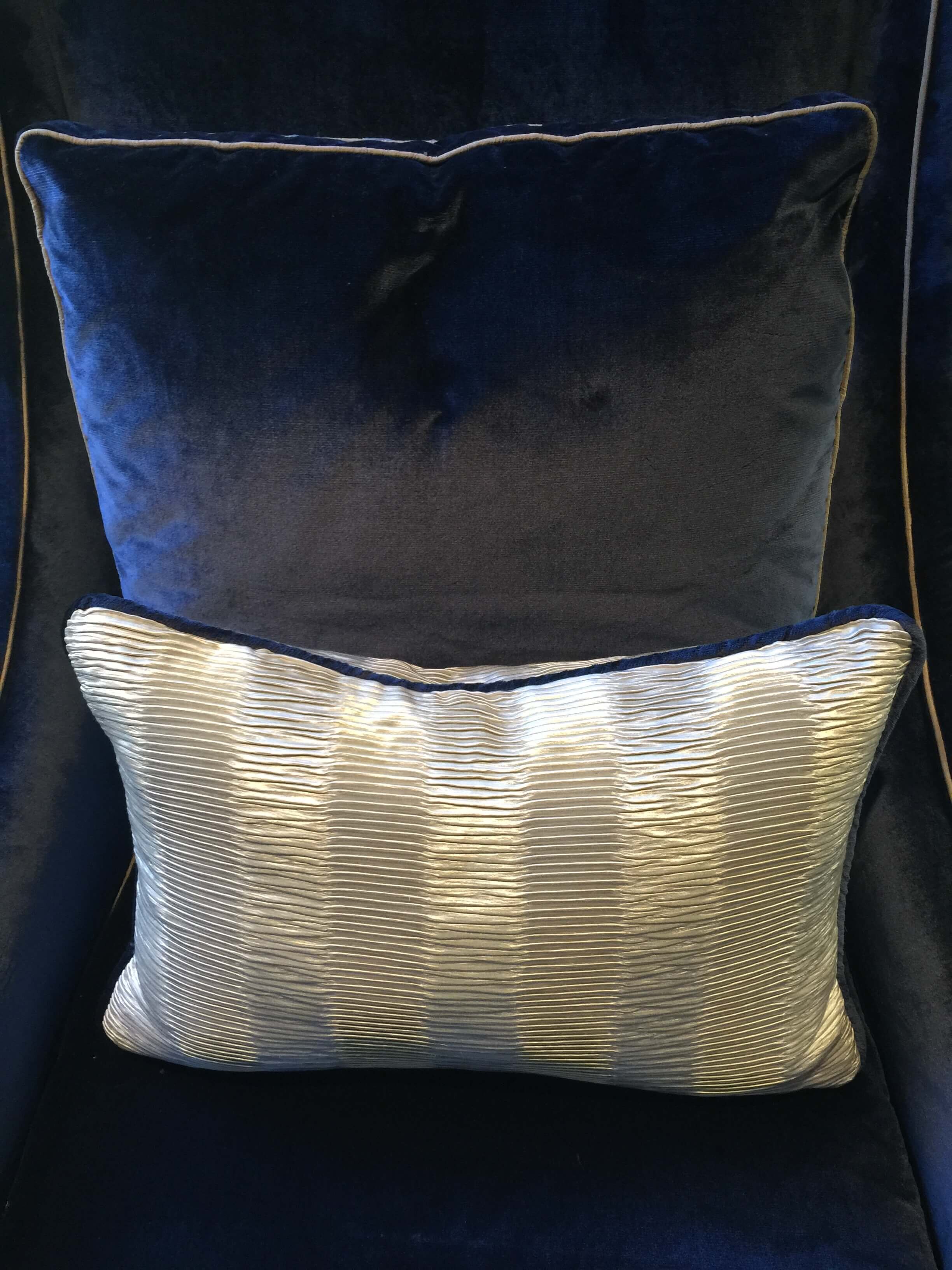
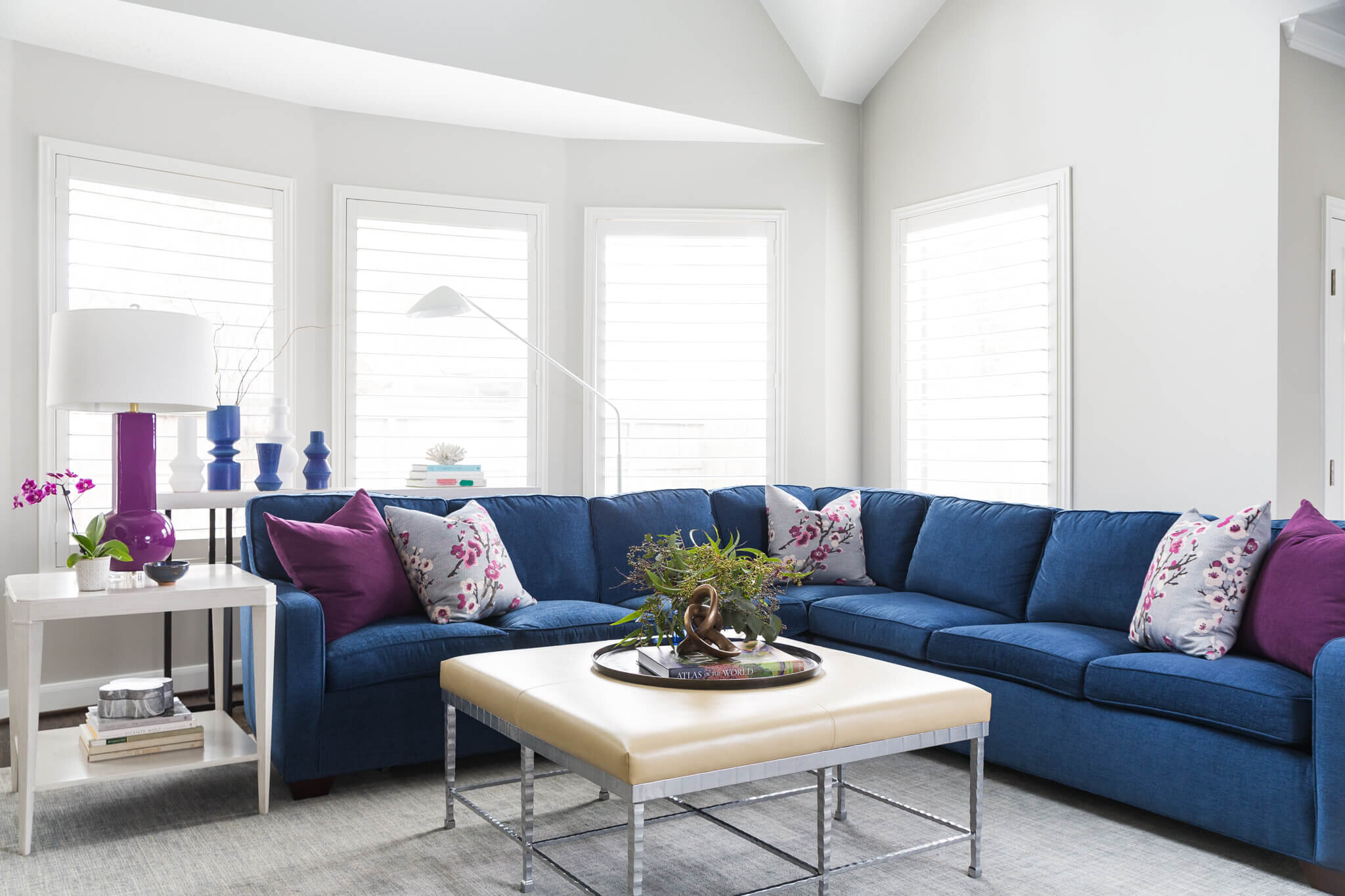
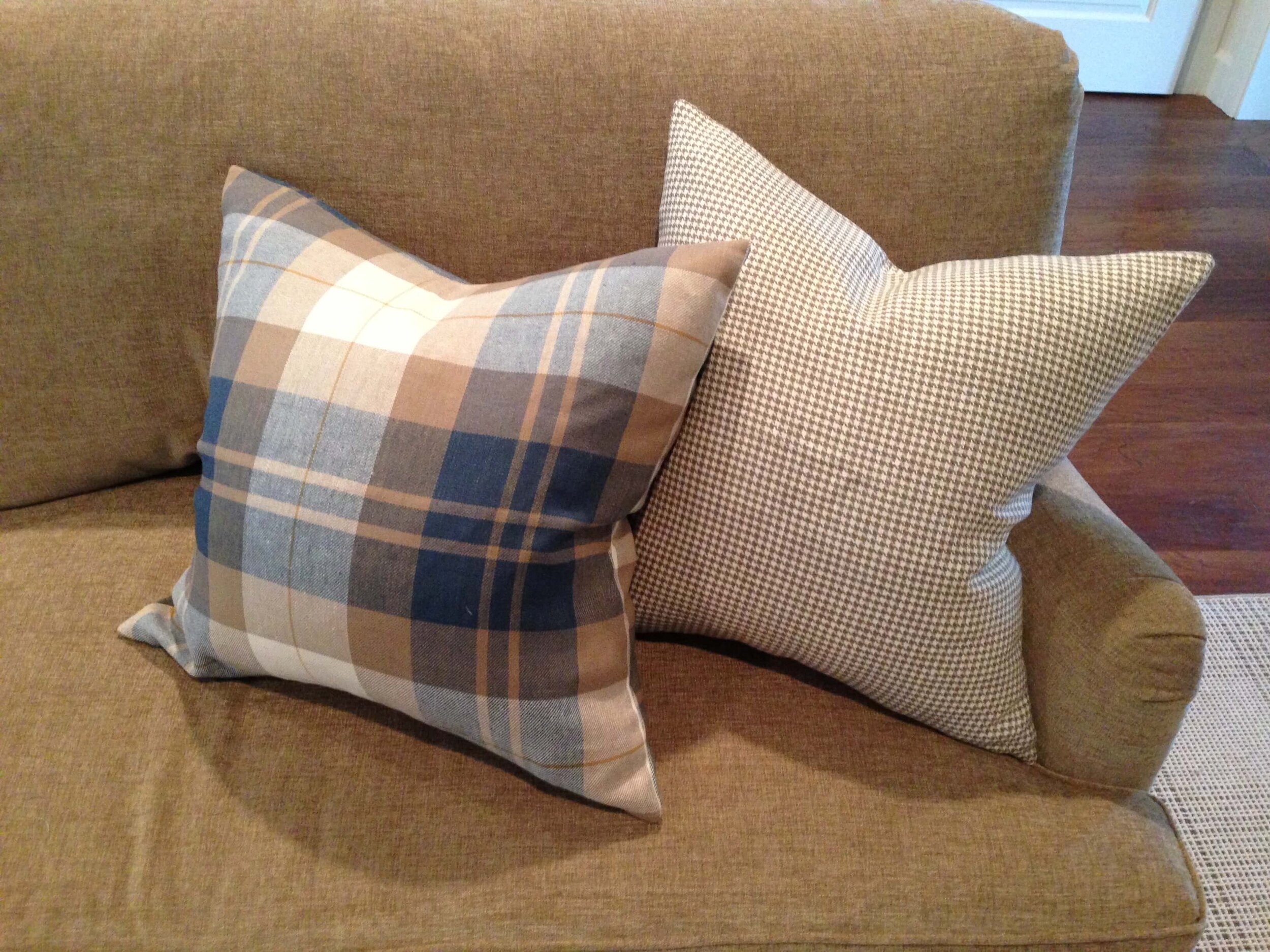

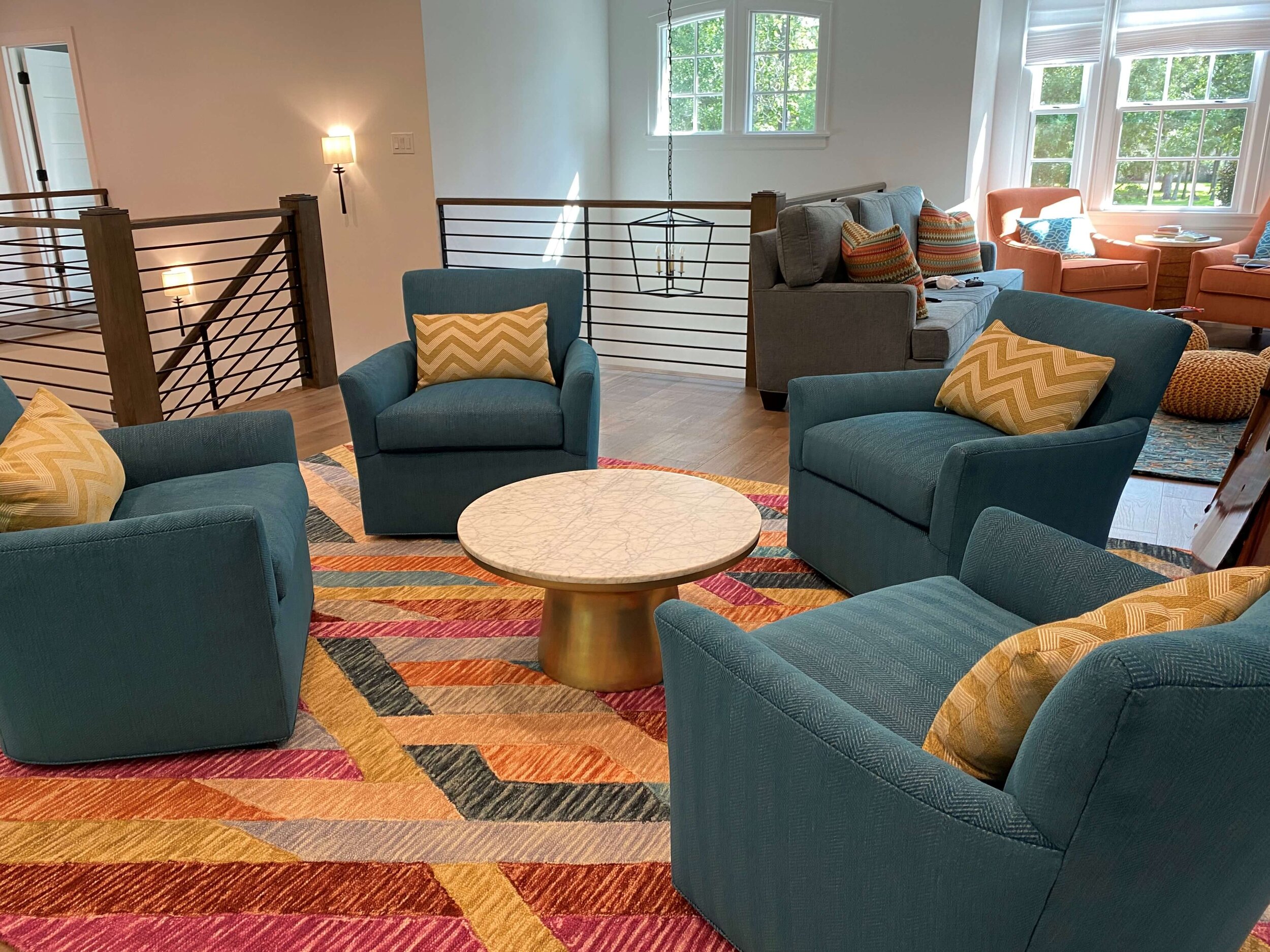


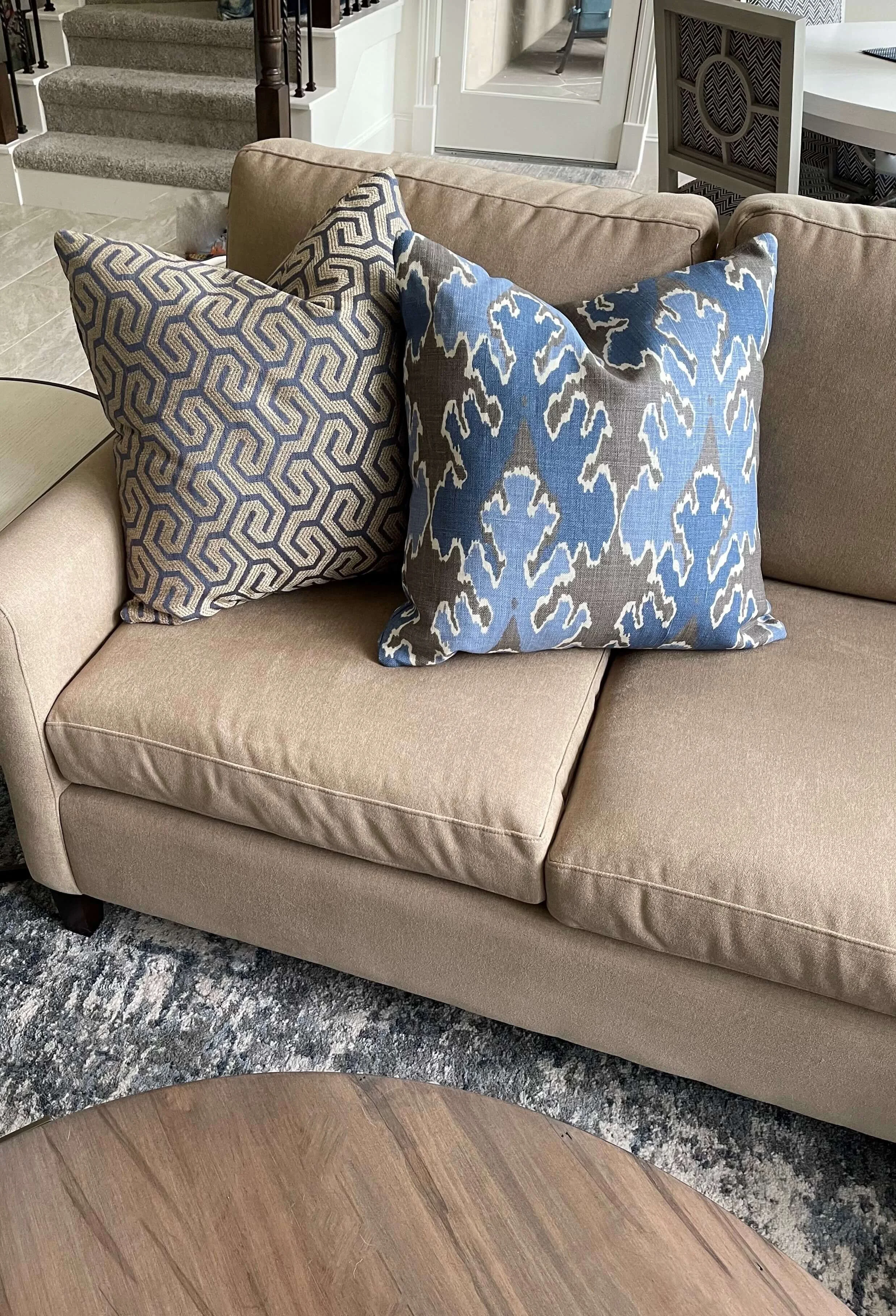
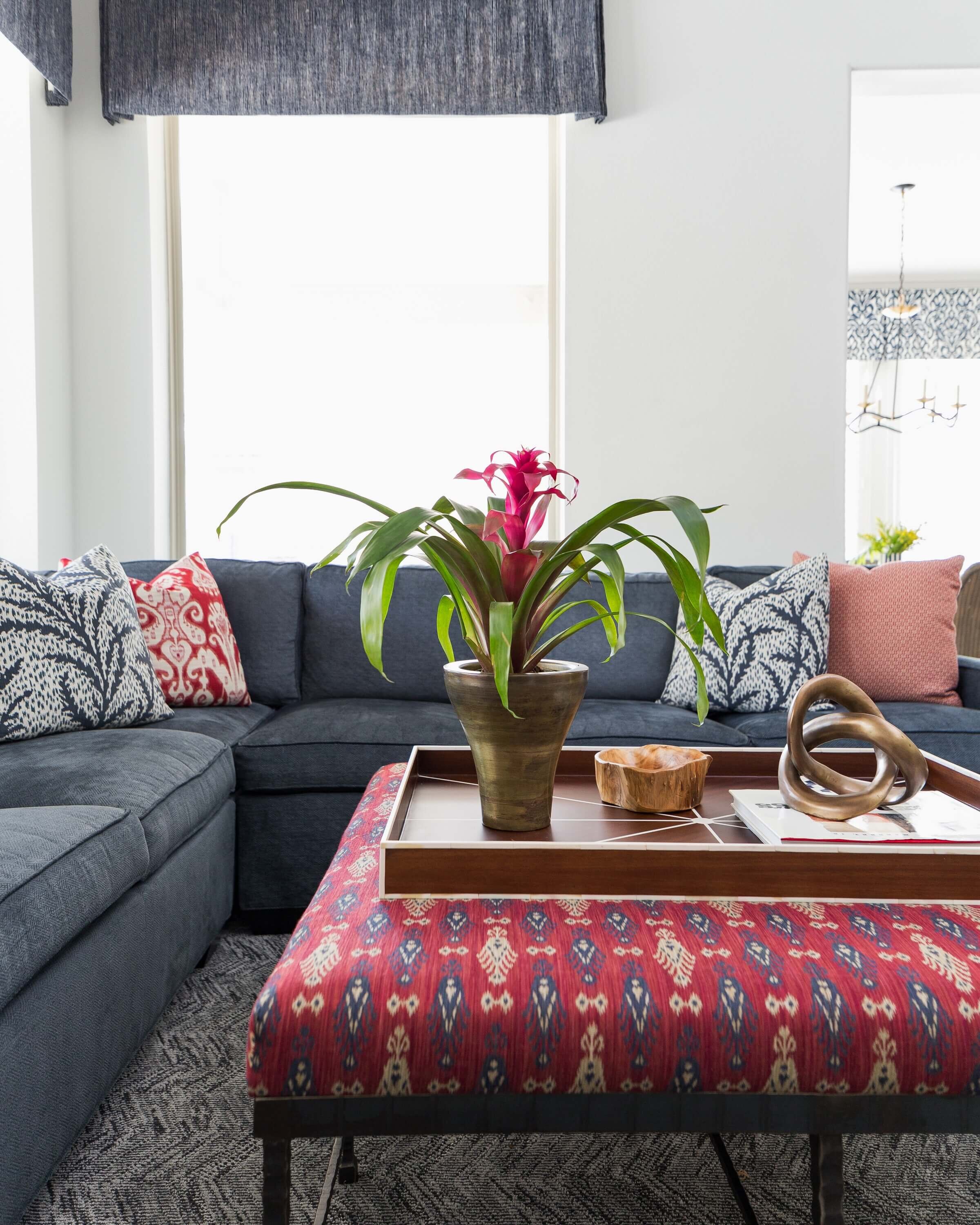

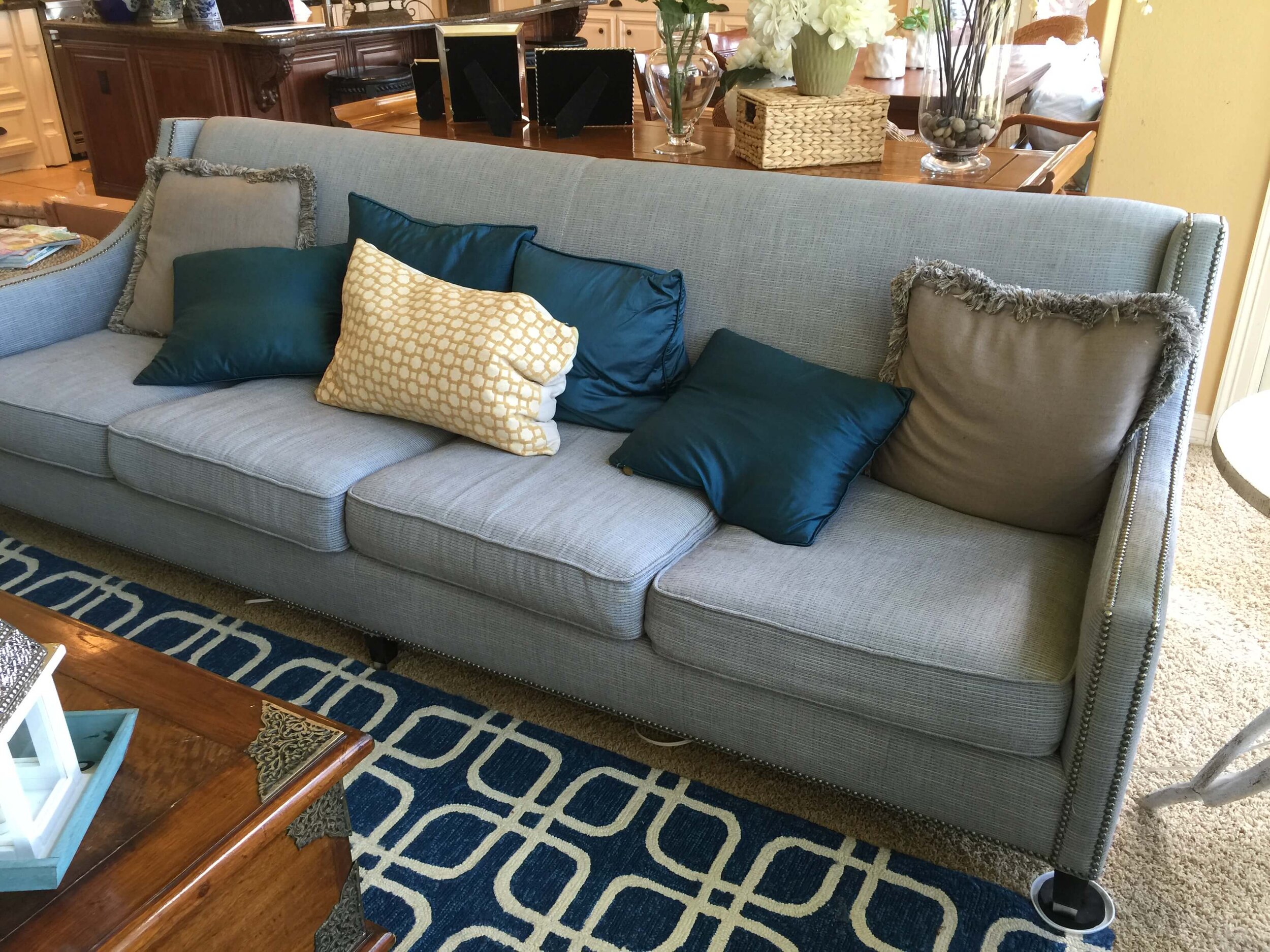
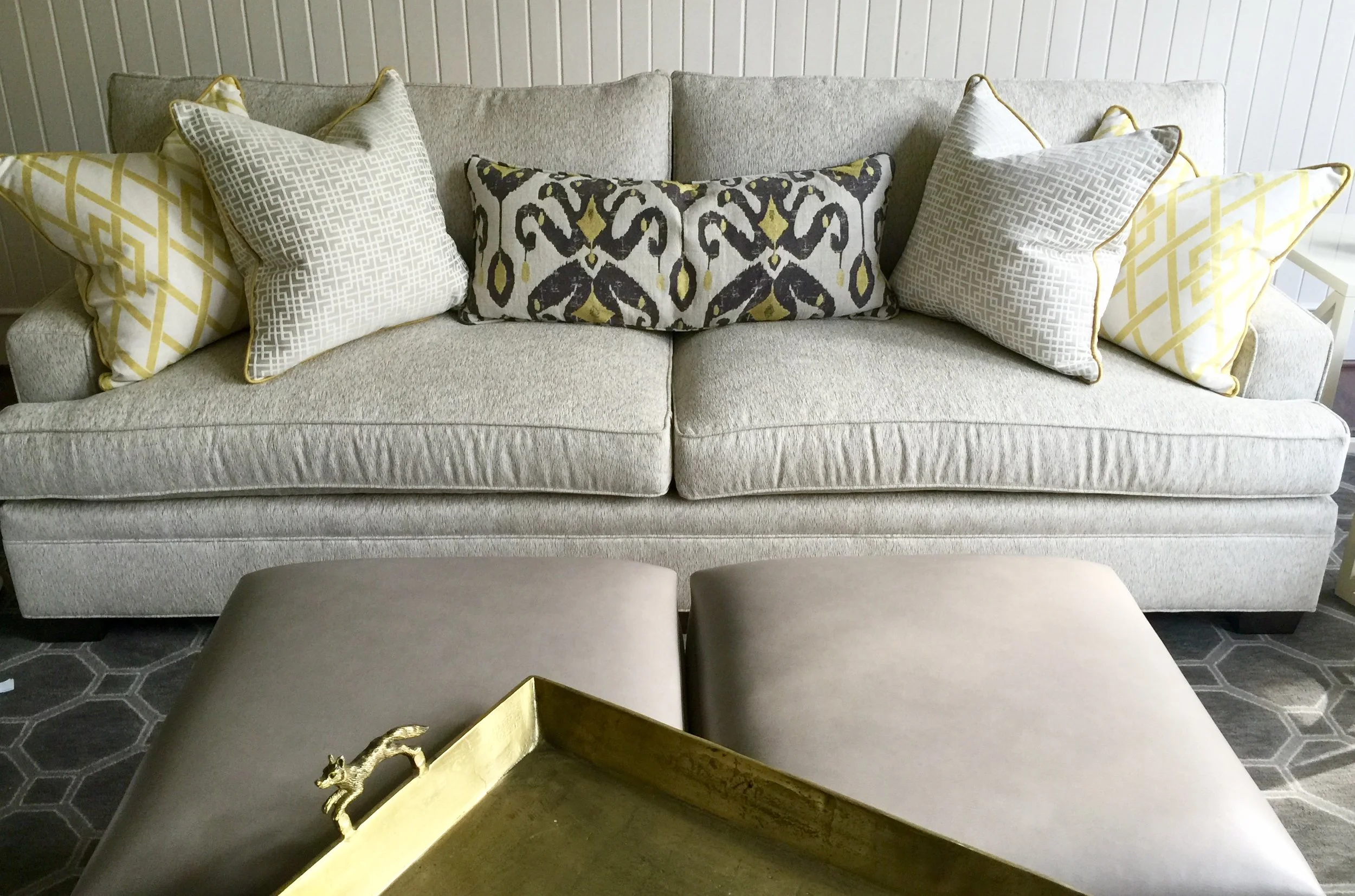

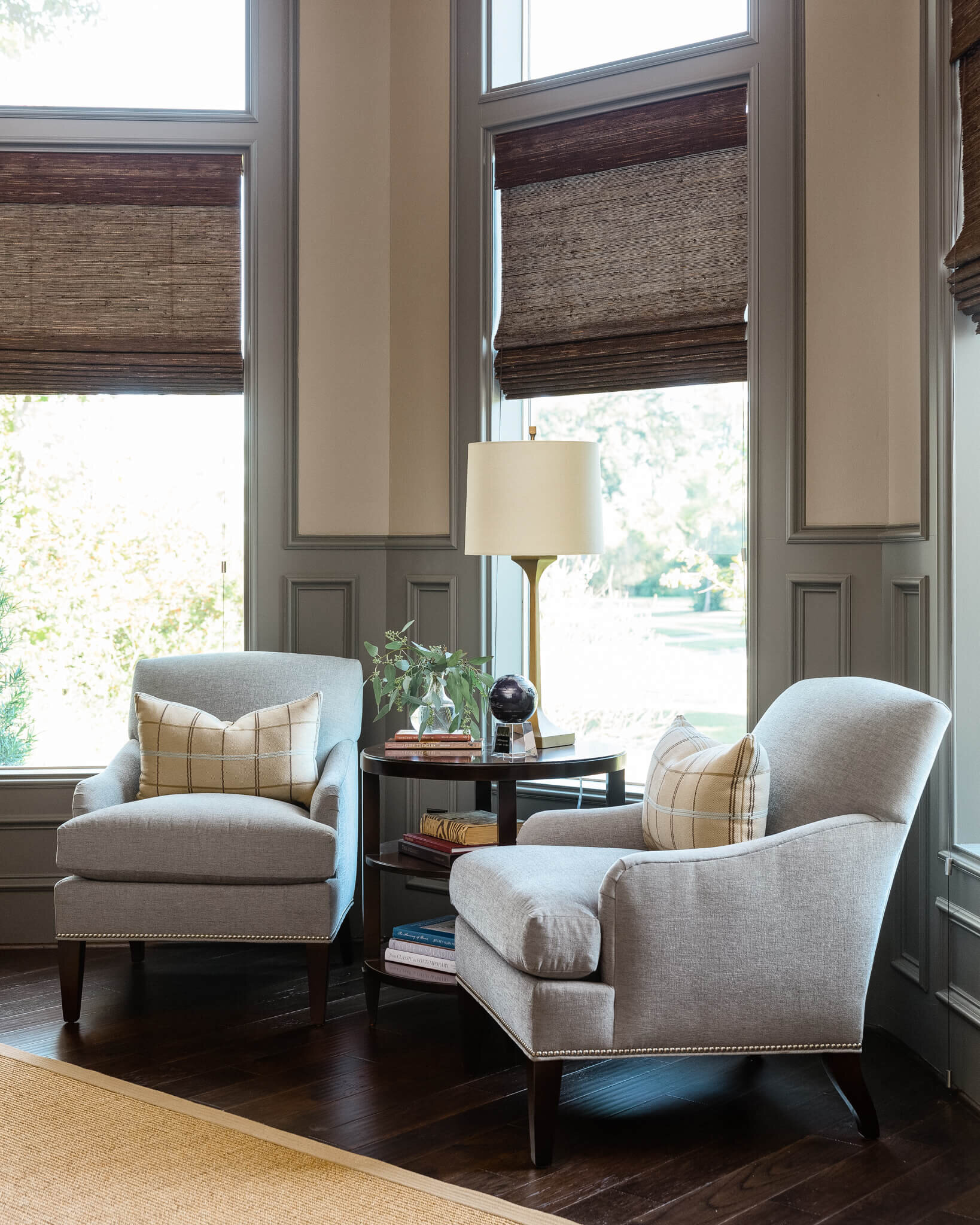
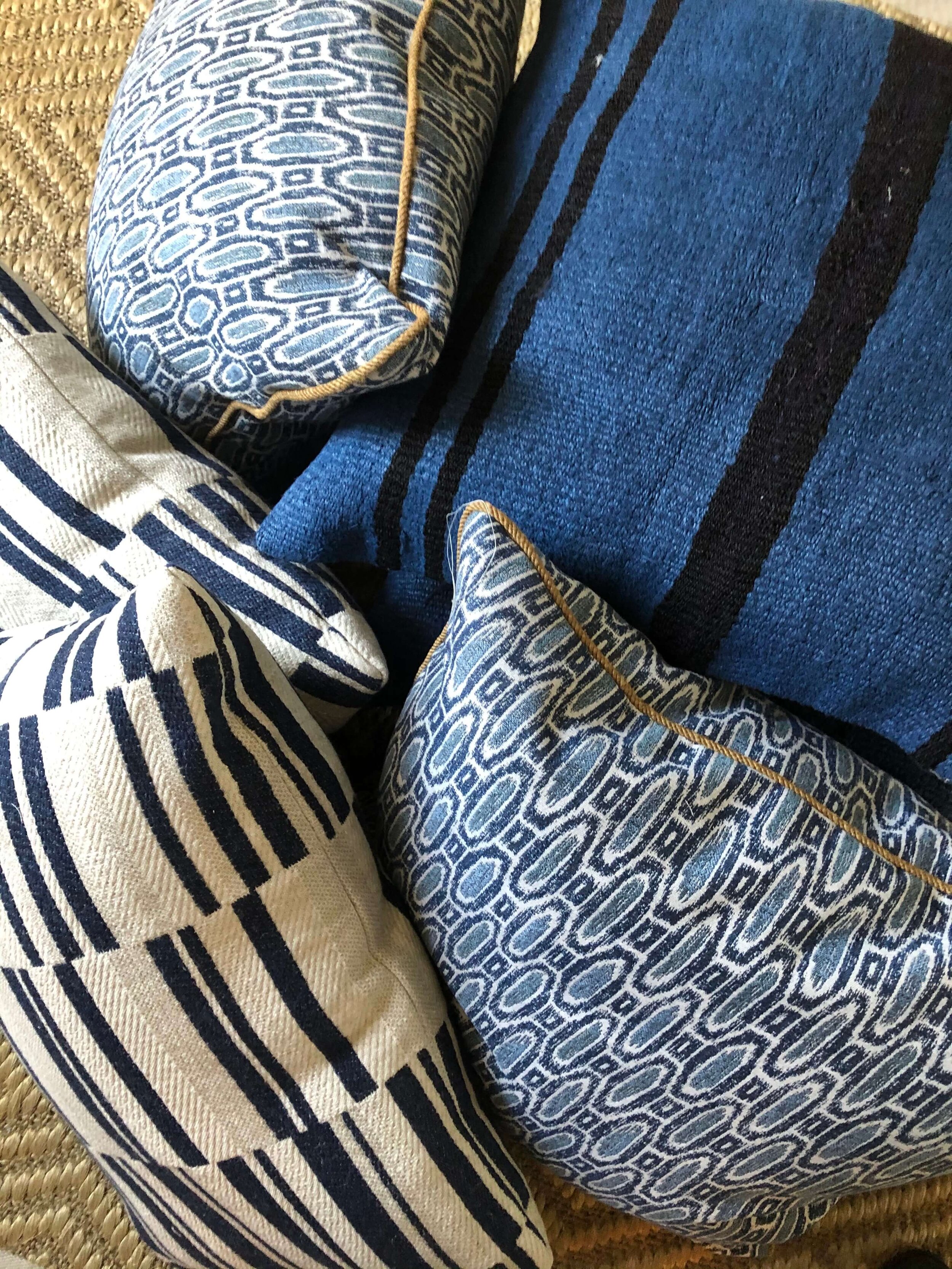
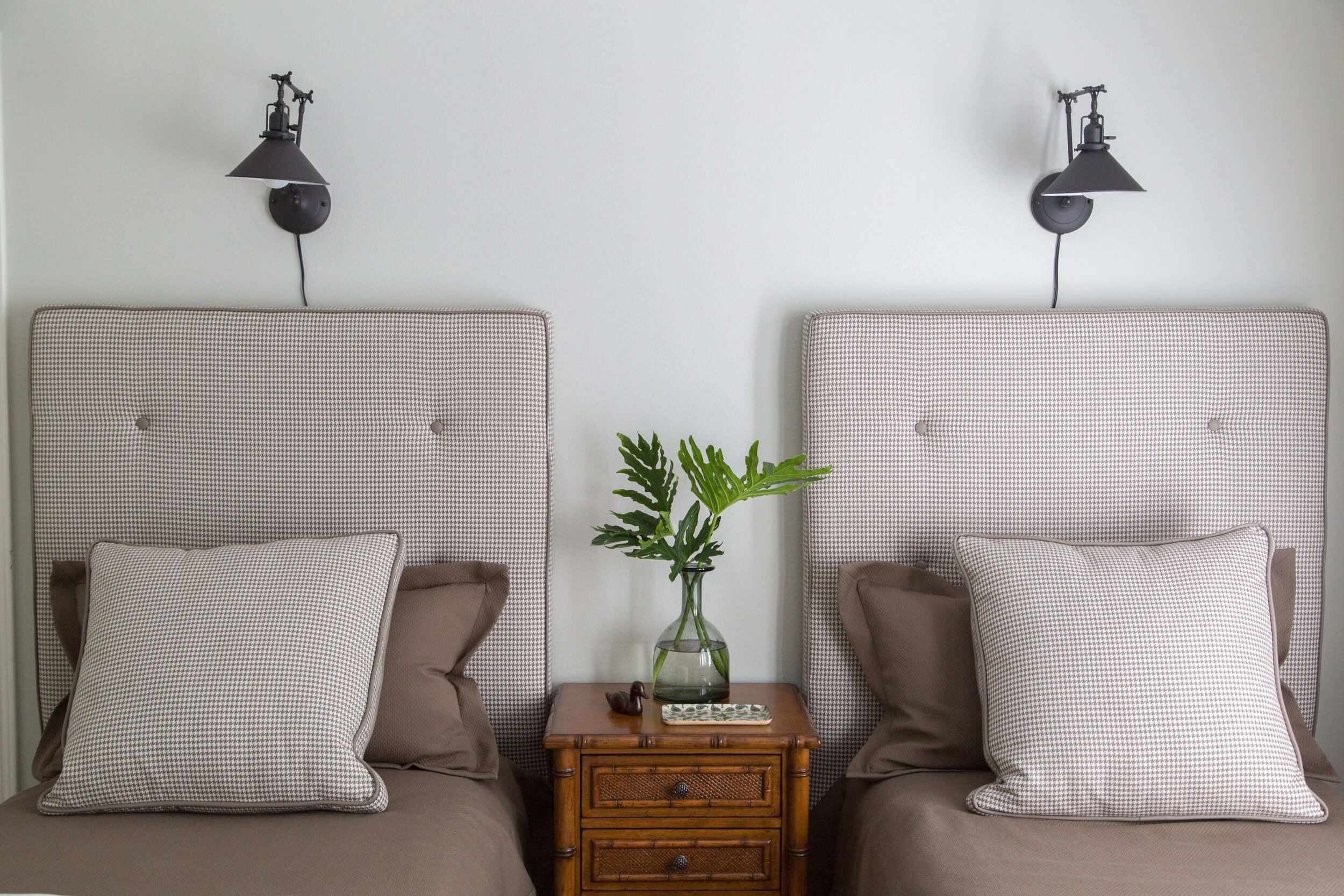

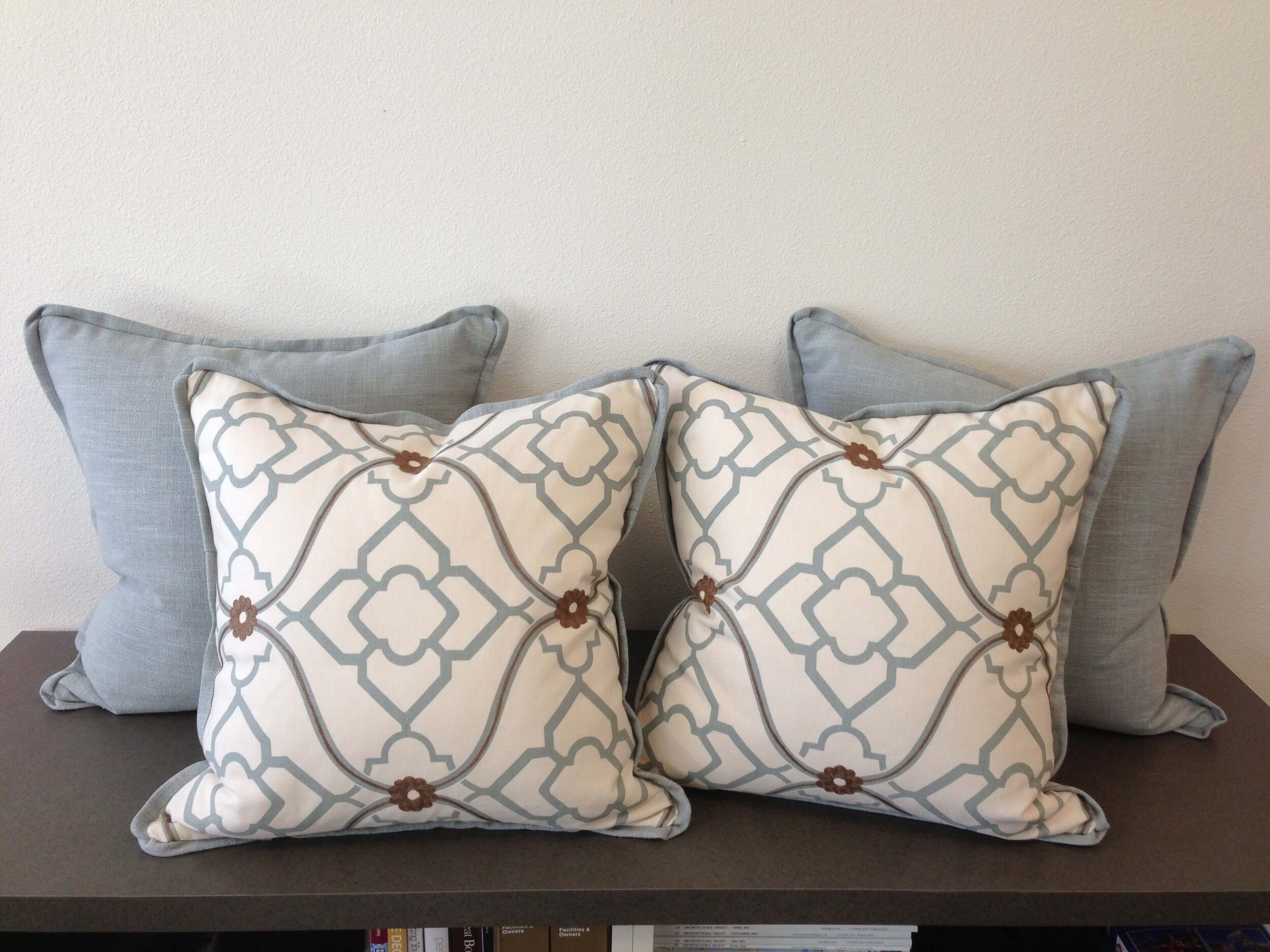
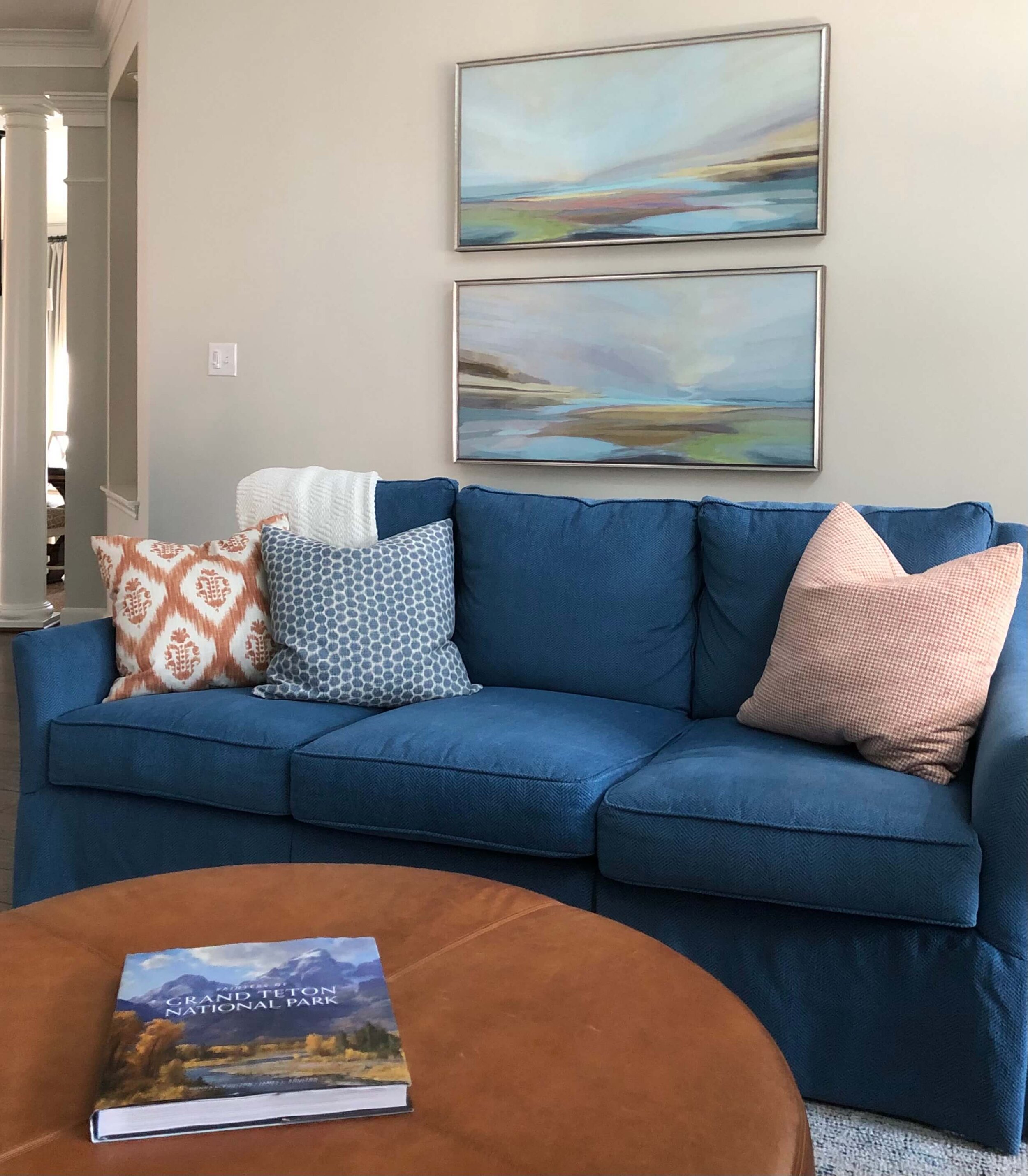
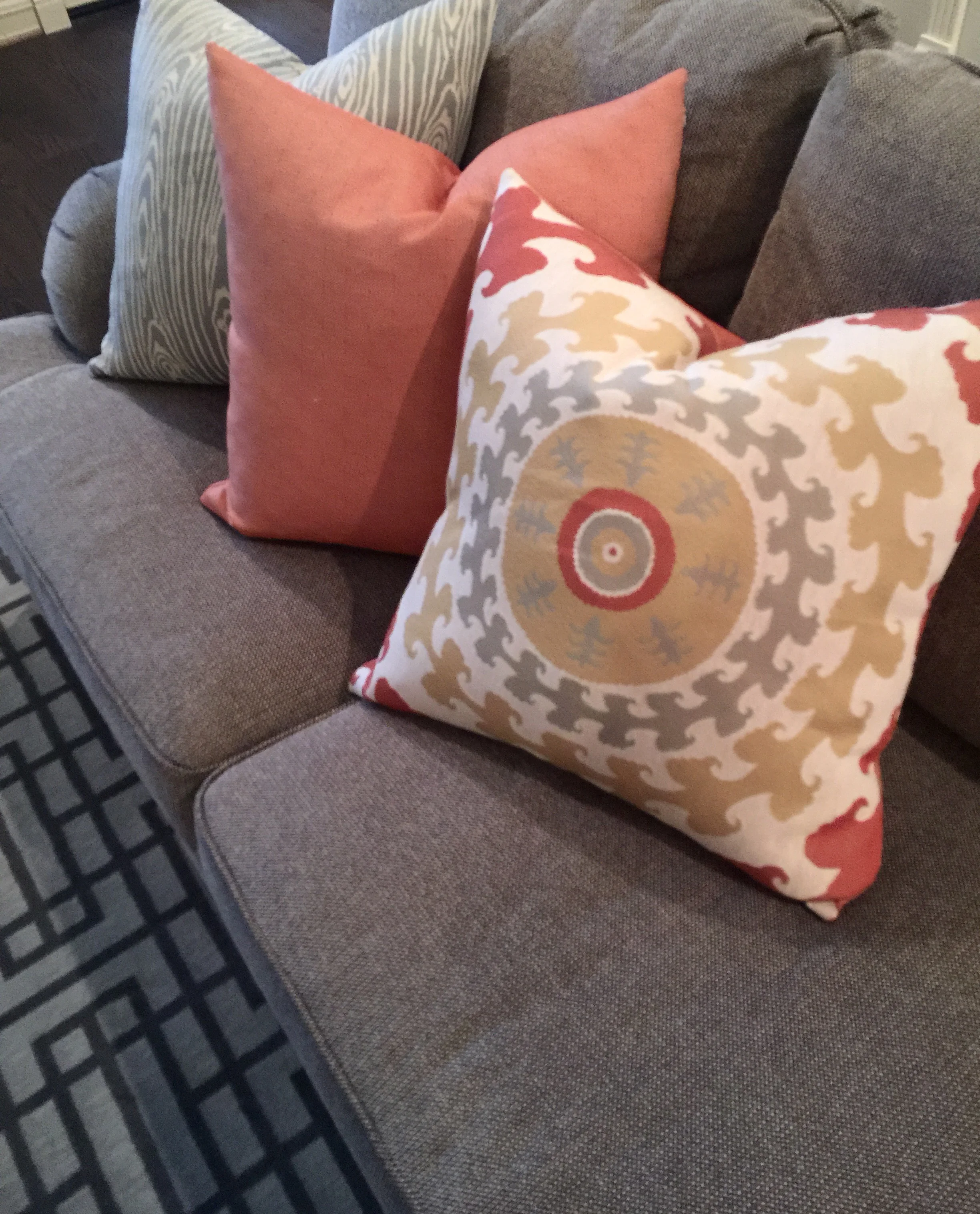
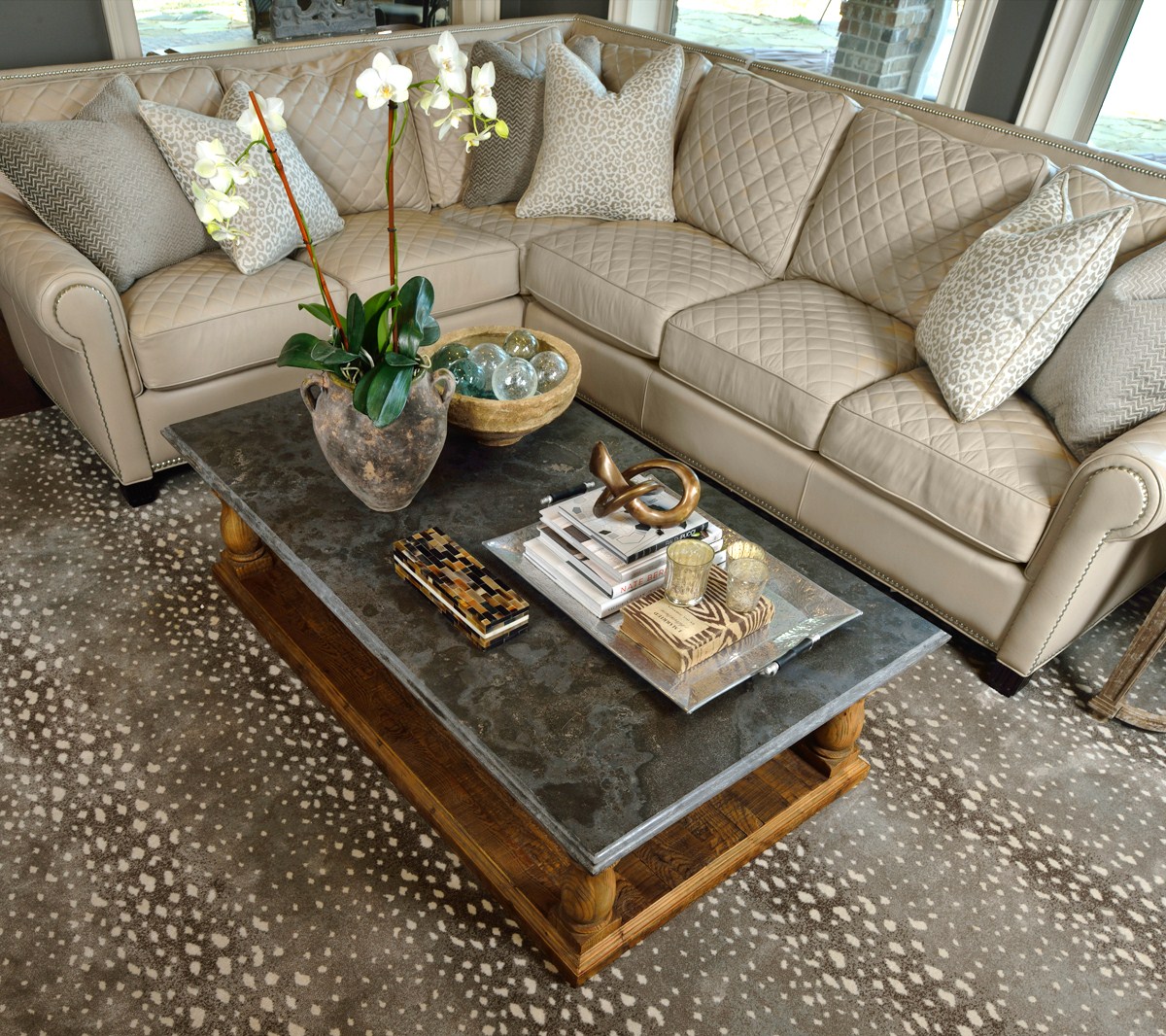
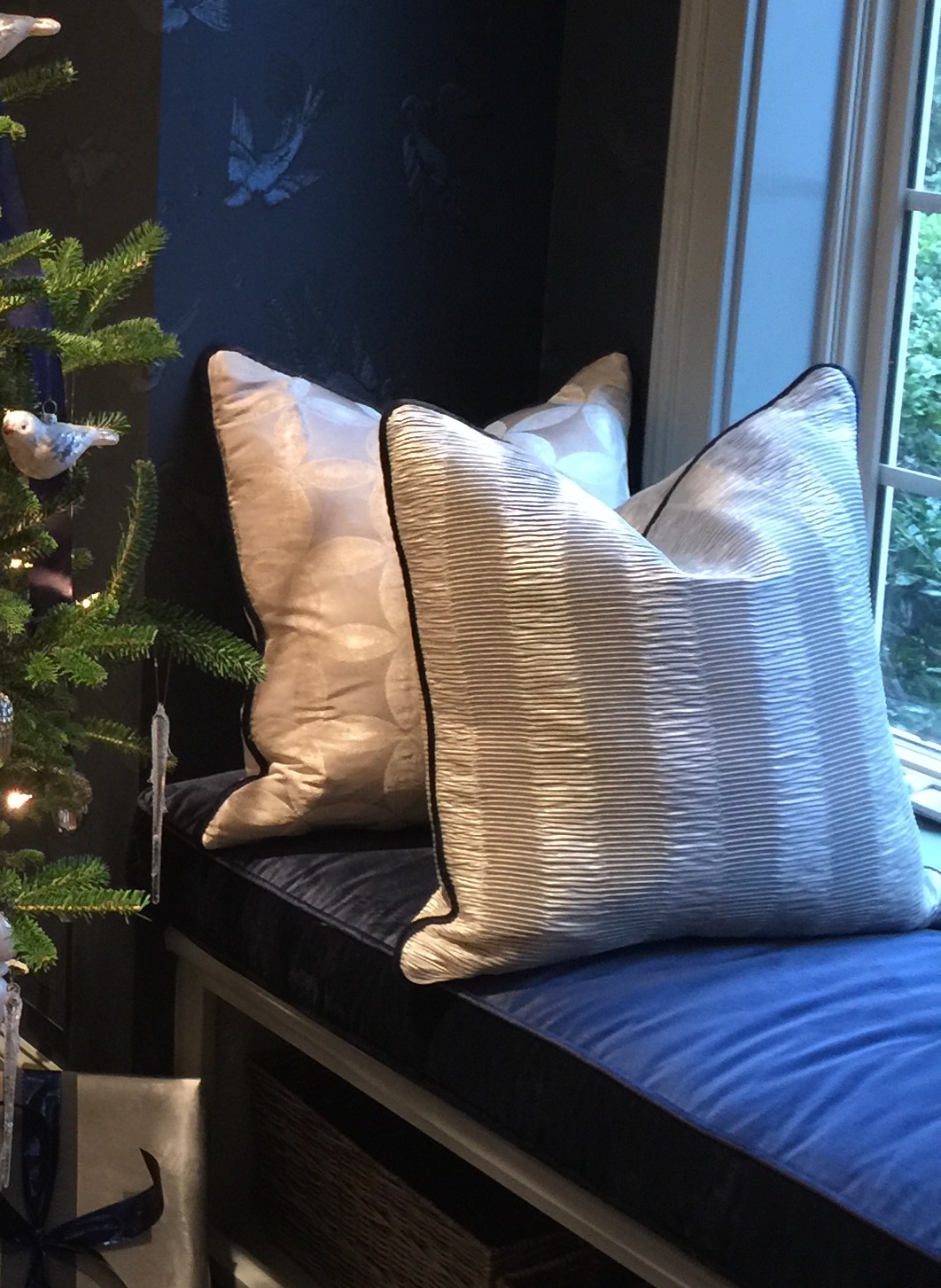
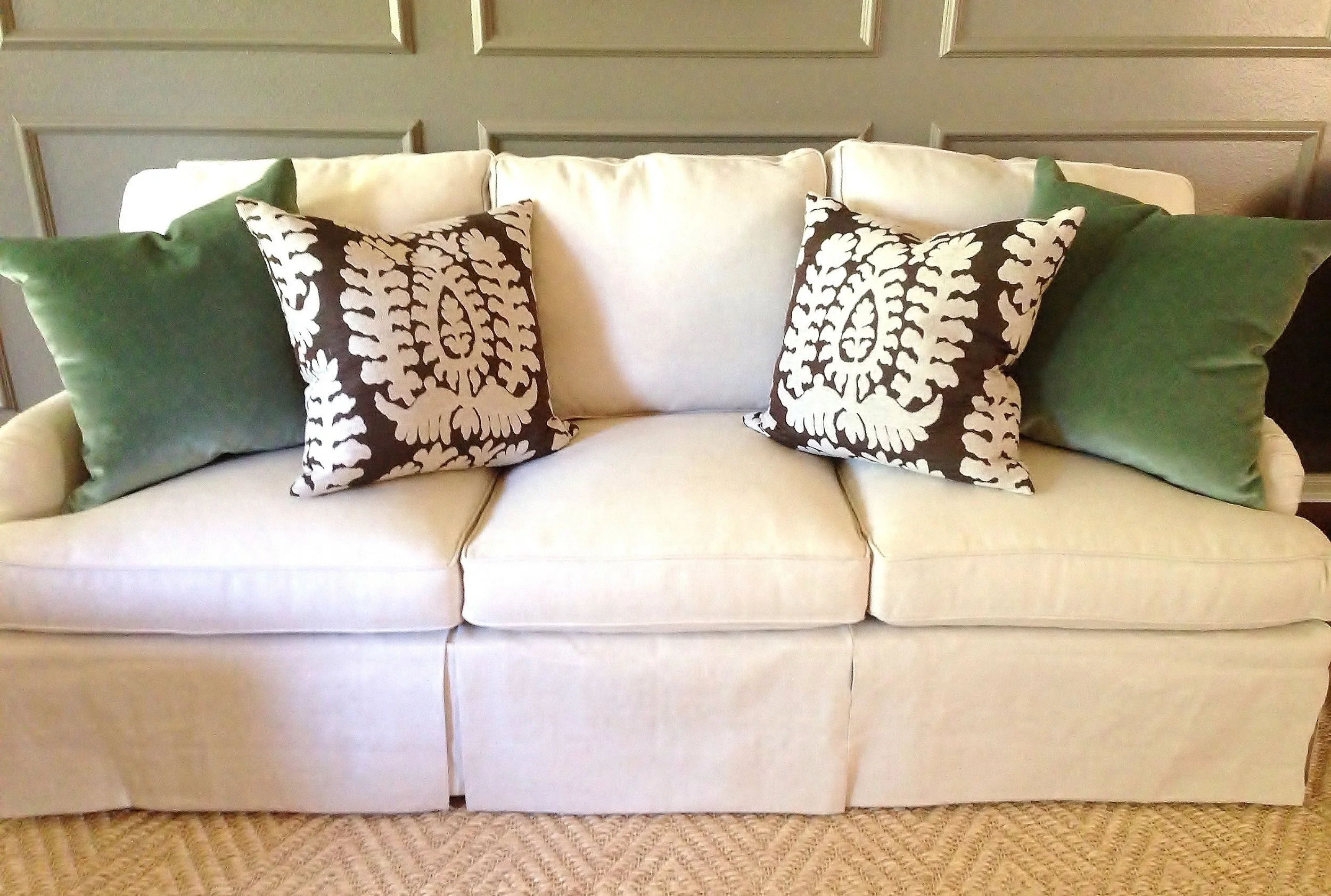

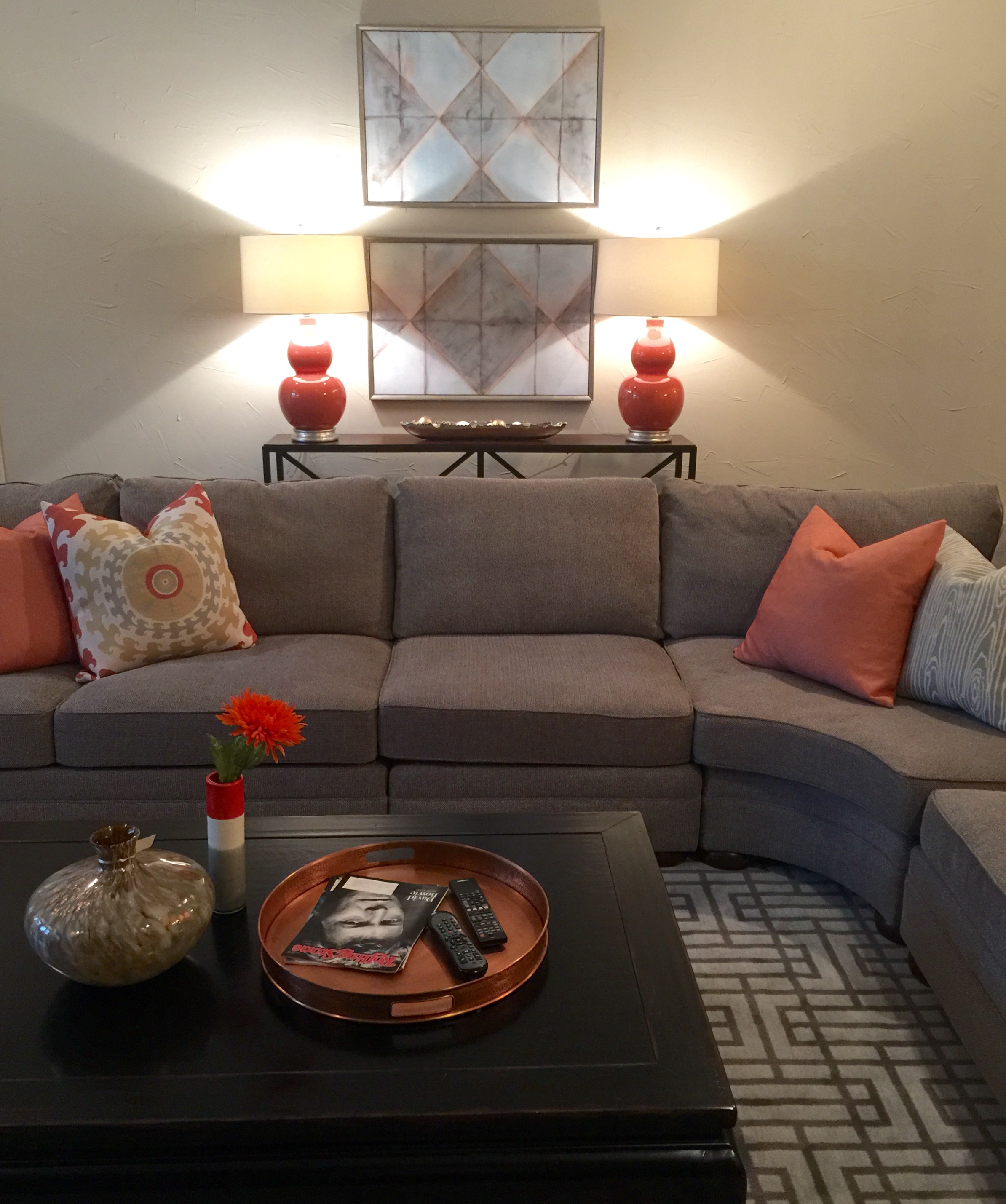
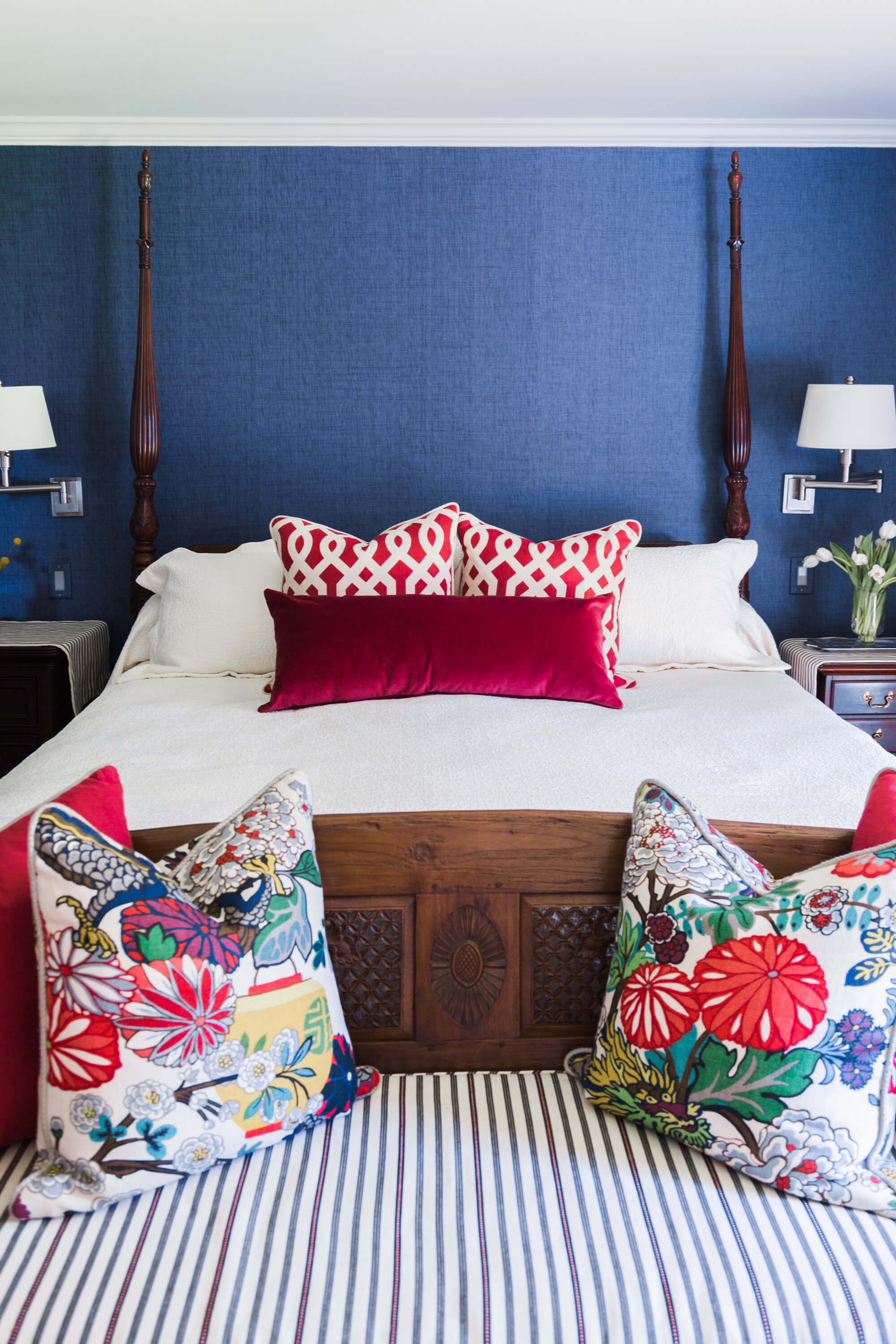
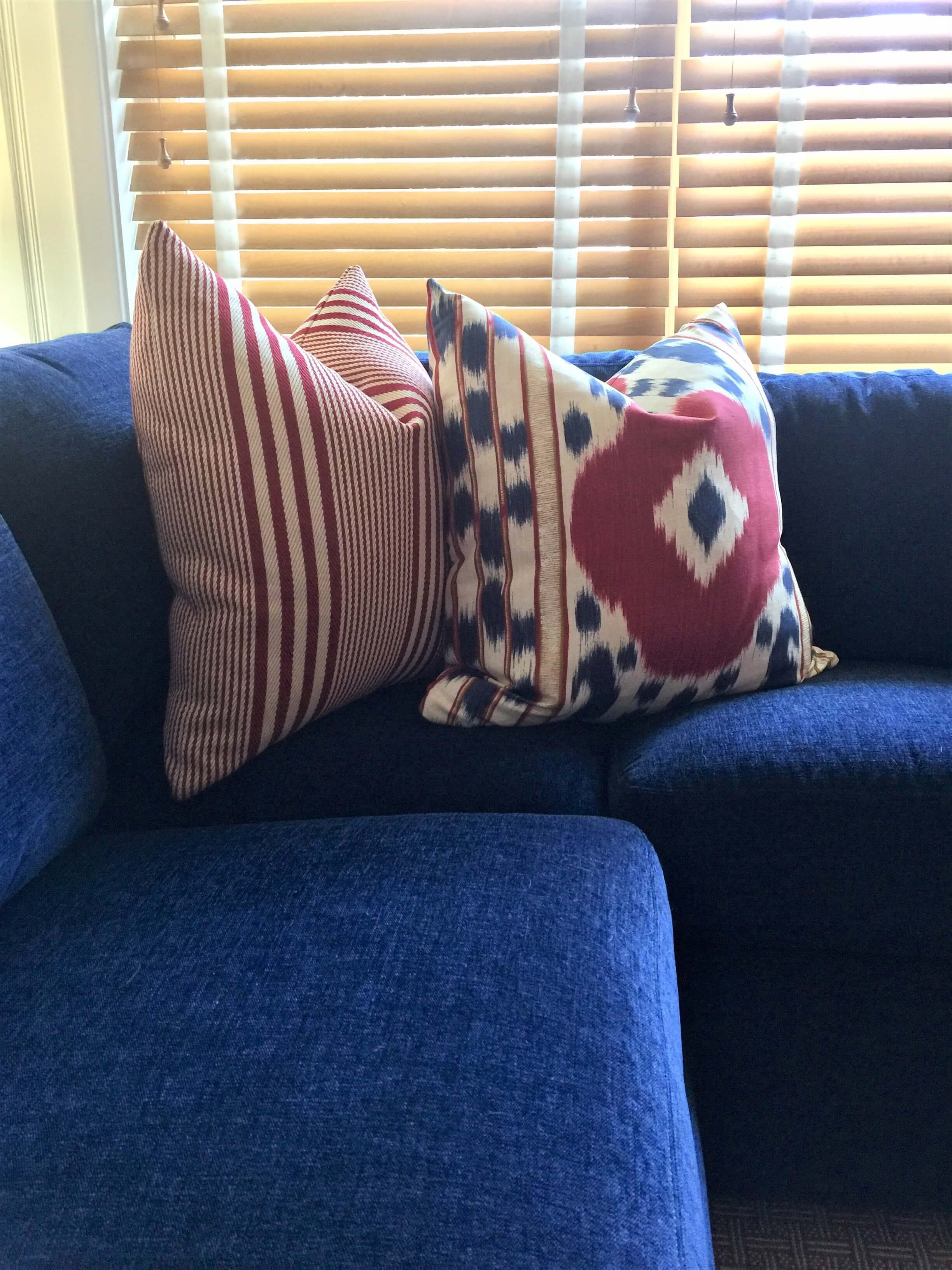
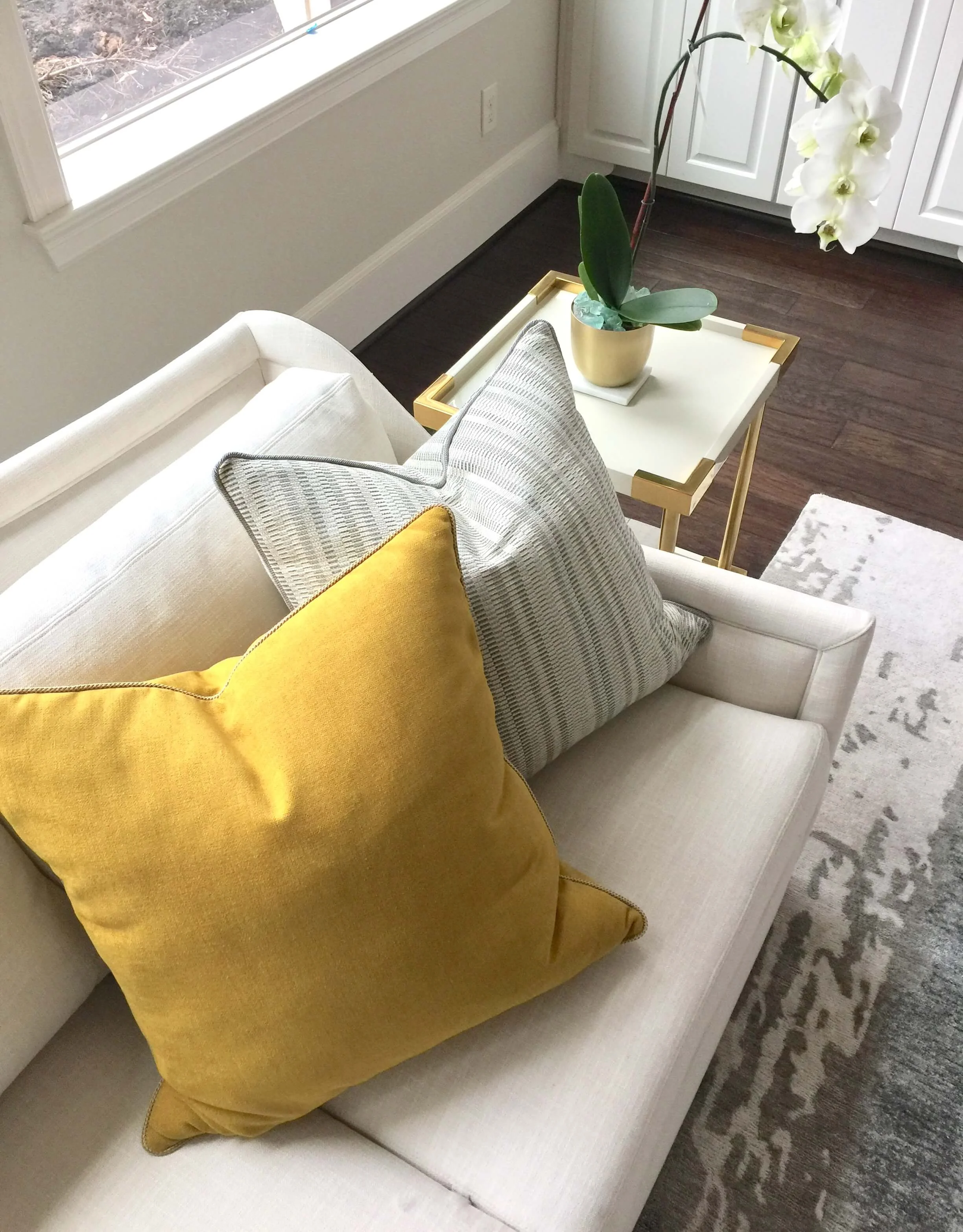
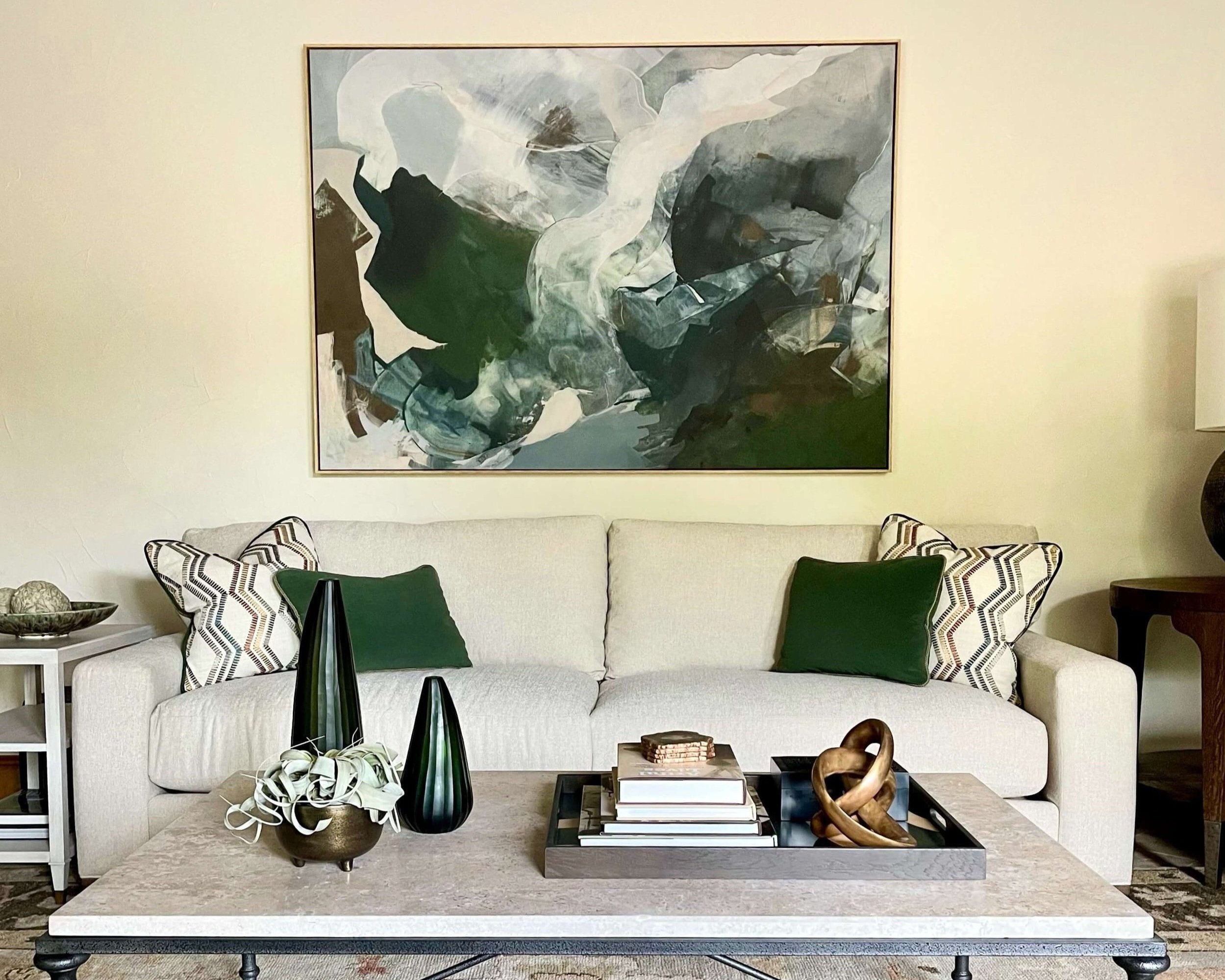




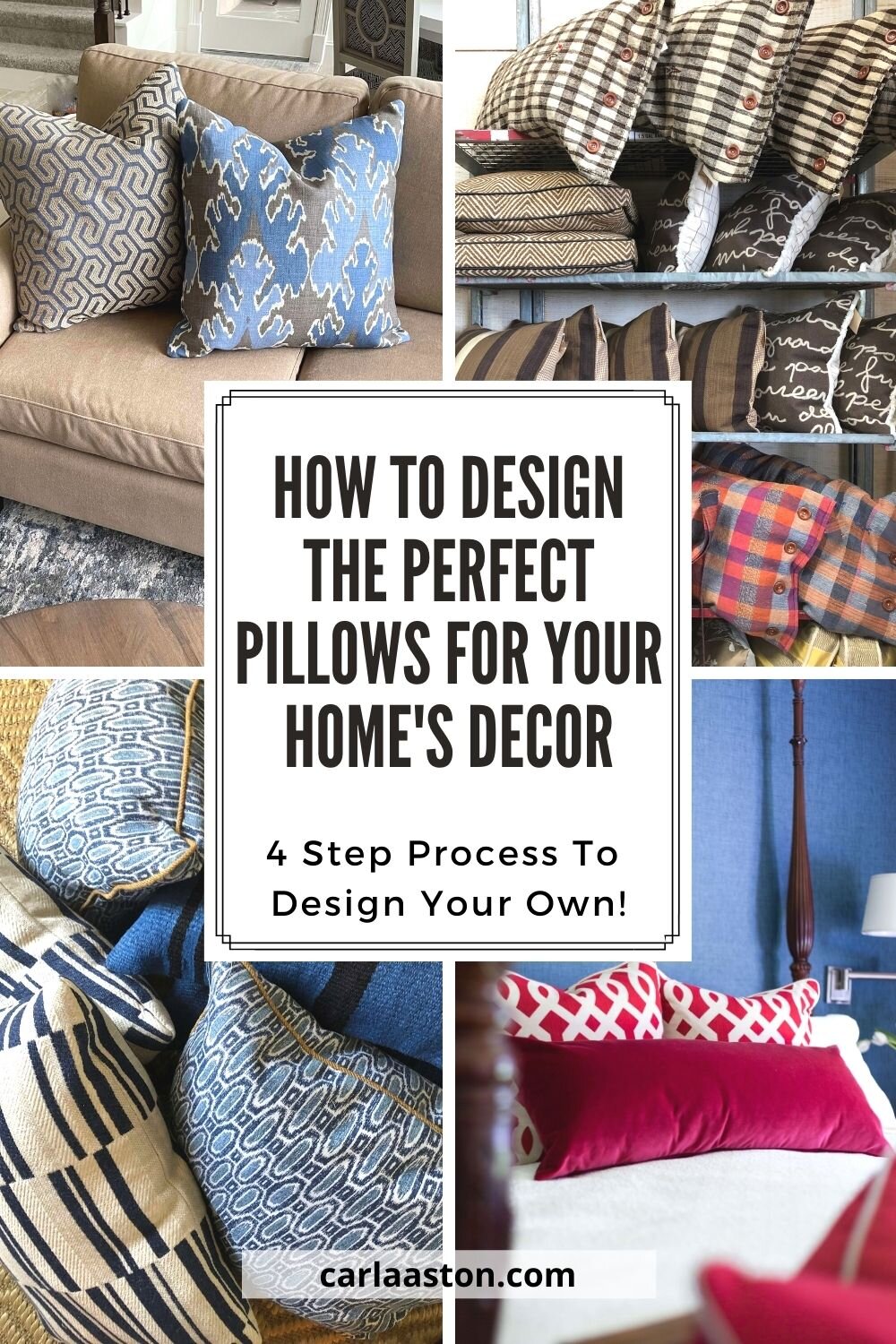
It’s not that pillows are absolutely crucial to an interior's overall design. It’s just that using them to introduce some color and pattern in small doses can add so much beauty, interest and just pull a whole room together.